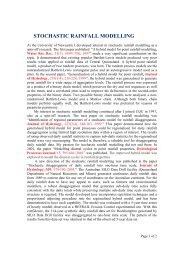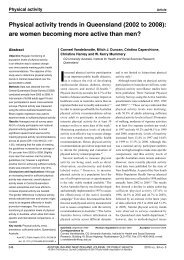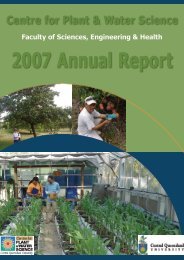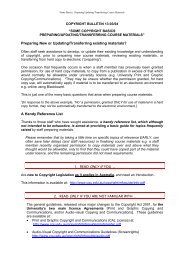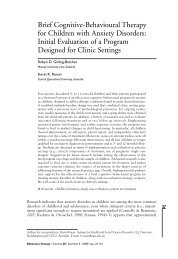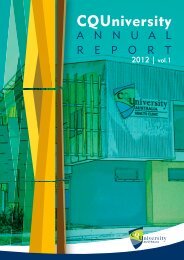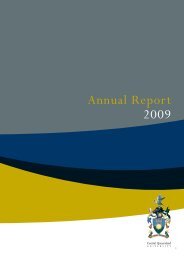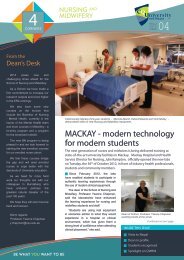Centre for Plant & Water Science - Central Queensland University
Centre for Plant & Water Science - Central Queensland University
Centre for Plant & Water Science - Central Queensland University
You also want an ePaper? Increase the reach of your titles
YUMPU automatically turns print PDFs into web optimized ePapers that Google loves.
<strong>Centre</strong> <strong>for</strong> <strong>Plant</strong> & <strong>Water</strong> <strong>Science</strong> 2008 Annual Report<br />
THE MYCOLOGY OF THE ROCKHAMPTON TREATED WATER<br />
SUPPLY<br />
SUMMARY<br />
A qualitative and quantitative study of the mycobiological population of all parts of the<br />
water supply system was conducted over 18 months and has now been completed. This study<br />
involved the collection and analysis of water samples monthly from nine mains stand pipes,<br />
six storage reservoirs, and four sites within the Glenmore Treatment <strong>Plant</strong>.<br />
Eleven physico/chemical parameters were also collected each month using a YSI multiparameter<br />
water meter. Samples were processed by membrane filtration followed by plating<br />
of the filter membranes on culture medium and subsequent enumeration and identification of<br />
resulting microfungal colonies. Sixty three genera were identified. Treated water on exit<br />
from the treatment plant was effectively devoid of microfungal contaminants but microfungi<br />
were isolated from all other parts of the system. Those reservoirs which are secondarily<br />
chlorinated on a regular and automatic basis yielded the lowest microfungal counts.<br />
Multivariate statistical analysis will now be carried out to determine any relationships<br />
between the microfungal population and the physico/chemical data collected.<br />
The sources of microfungal contamination are currently being investigated. Possible sources<br />
of microfungal propagules include airborne ingress to the pulse-filled reservoirs, and<br />
sporulating fungal biofilm growing on the internal walls of reservoirs and pipes and in the<br />
sediments accumulated in reservoirs and pipe dead ends. Coupons of glass, PVC and<br />
concrete have been immersed in two reservoirs to study the <strong>for</strong>mation of fungal biofilm.<br />
Examination of surface deposits by micro-filtration and culture, fluorescent staining, and<br />
microscopic examination using light, scanning electron, and fluorescent microscopy<br />
techniques are being used. Preliminary results indicate that there is no sporulating<br />
microfungal biofilm within the system or on the coupons. This work is continuing.<br />
The possibility that microfungal spores survive the treatment plant processes, but in a<br />
damaged state, and are subsequently capable of resuscitation is being investigated by<br />
subjecting chlorinated fungal cultures to antioxidants known to protect spores of some<br />
species. Preliminary results indicate that resuscitation does not occur.<br />
Future work will include an examination of the role of coagulation/flocculation and sand<br />
filtration at the treatment plant. Preliminary tests have shown that polyaluminium hydroxide<br />
flocs are very efficient at entrapping microorganisms.<br />
Fig. 1. Mains sampling standpipe Fig. 2. Fluorescent micrograph of floc Fig. 3. Coupons ready <strong>for</strong> immersion<br />
showing entrapped microrganisms<br />
PROJECT STAFF Principal Investigator: Noel Sammon<br />
Co-Principal Investigator: A/Prof. K. Harrower<br />
Others:<br />
A/Prof. L. Fabbro & Prof. R. Reed<br />
FUNDING Fitzroy River <strong>Water</strong> & CQ<strong>University</strong><br />
INCOME $8,879<br />
28





